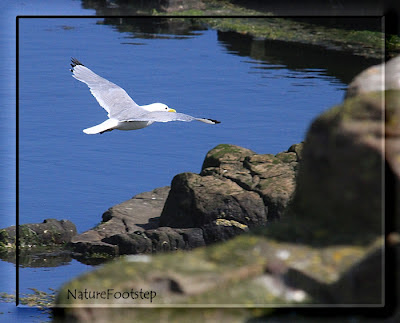click to enlarge
NF Photo 120626, Staple Island, Scotland
How they could nest that way I have no idéa. I wonder how they do to secure the nest to the side of the cliff?
The comment from Ramlbing woods explain how. Thank you.
How they could nest that way I have no idéa. I wonder how they do to secure the nest to the side of the cliff?
The comment from Ramlbing woods explain how. Thank you.
Om Tretåig mås på wiki
About Black-legged Kittiwake on wiki
on youtube
Wild Bird Wednesday 7 Nature Notes
If you can´t comment with the previous settings, please go to CR Birds and tell me.
Find the birds with Etiketter - Labels- Tags at the bottom of this page.
Labels: Fågel, NatureFootstep, Monica Johansson, foto, photography, natur, nature, fotoutmaning, photo challenge, photo meme, fåglar, bird, birds, fågelskådning, birding, swedish, svenska, fågelfoto, birdphoto, galleri, gallery, vilken fågel, what bird, NF Winged Rissa tridactyla, Tretåig mås, mås, gull, Black-legged Kittiwake, Laridae, Farne Island, Staple Island, Scotland, Skottland,




The nest is in a precarious spot for sure!
ReplyDeleteUntil this year I had no idea there were so many different kinds of gulls. The black-legged kittiwake is a handsome variety.
Wow, it's just hanging on!! Boom & Gary of the Vermilon River, Canada.
ReplyDeleteSuch a great bird to see. Looks so clean.
ReplyDeleteWhat an awesome sighting, love the cute chick. Great photos!
ReplyDeleteGreat photos. That nest doesn't look very secure but the young ones seem to be doing well.
ReplyDeleteBeautiful sea birds.. your images are fantastic.
ReplyDeleteI love the nest shot!
ReplyDeleteVery nice, and the nest shot is great!
ReplyDeleteThis is what I found...
ReplyDeleteKittiwakes nest in huge colonies which can number 10,000 pairs located on cliffs. Breeding starts in mid-February when the adults return to their nesting area to hold their territory. The breeding Kittiwake will hold up nesting material to its mate as an indication of the readiness to begin constructing the nest. Every inch of space is used on the cliffs; their seaweed nests may be only a wing span from the next nest and are cemented to the cliff ledges by their own guano and mud. Huge flocks often descend onto ponds and shores to gather mud, grass, and seaweed to take back to their nests. They will also nest on man-made structures such as buildings and piers. They lay two eggs which are incubated by both adults for about 25 days. Although the eggs appear identical to our eyes, the parents can easily identify the eggs and will fiercely defend them. The chicks take 6 weeks to hatch, and after fledgling are completely independent of their parents.
--Michelle--from Nature Notes..
Hi nice site
ReplyDeletehttp://www.rtfgrhr84kd.com/
Hej!
ReplyDeleteFina bilder på denna lite udda art. Alltid lika kul när man ser den här hos mig, vilket oftast bara inträffar vid höststormar.
Ha en fin dag!
/Ingemar
Beautiful photos the young one look great.
ReplyDelete